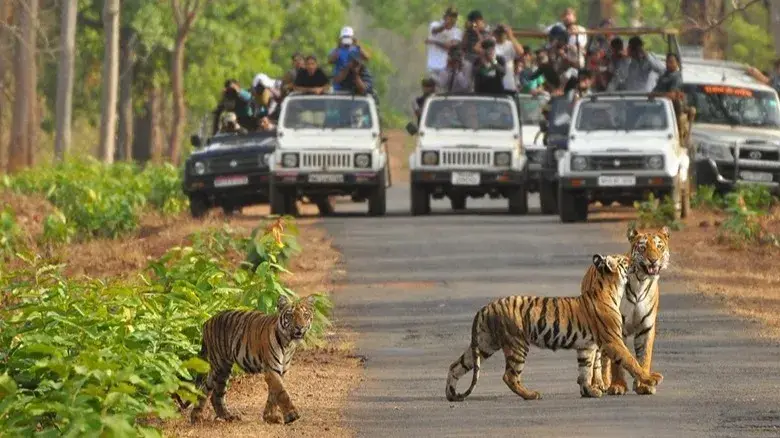Tiger Safari | Image:Uttarakhand Tourism
Concerns around tiger safaris: The Supreme Court has last week set up a committee, to look into concerns around tiger safaris in the buffer areas of national parks, asking the panel to issue requisite guidelines. The apex court’s decision comes in the wake of ecological damage reported at the Jim Corbett National Park in Uttarakhand.
Earlier Reliance Group’s voluntary organisation ‘Vantaara’, launched last month, triggered a debate on the rights of animals. Anant Ambani, the youngest son of corporate czar Mukesh Ambani, has been vocal on rescue and rehabilitation of abused animals, especially elephants. At a time, when the animal welfare has come into the limelight, what are the good practices that visitors to wildlife sanctuaries must bear in mind during the animal safaris? Republic Business takes a deep dive.
No booing, cat calling
Multiple studies conducted by the World Wide Fund for Nature (WWF), have revealed the high damaging impact which ‘mob mentality’ leaves on a wild animal’s psyche. Reports suggest that animals, who often encounter rogue groups of visitors in zoos or sanctuaries, in the long run could see hooliganism leading to a behavioural change in them.
The upcoming summer season is set to see people in large numbers beeline wildlife sanctuaries. A first-hand experience of the writer to have visited wildlife sanctuaries, in literally the country’s expanse, suggests that there is a strong need for adventure seekers to get sensitised about wildlife and privacy that animals. Among the top five areas of self-discipline that the crowds visiting wildlife sanctuaries in India need to bear in mind, the power of silence, as put forth by wildlife experts is the best virtue a wildlife lower can possess.
Disappointment over non-sighting
The most peculiar problem of vocal vulgarism, has for long haunted zoos across the country. It is obvious to expect high levels of excitement triggered by the sighting of an animal. The immense joy, which a wildlife visitor or a leisure traveller, derives from seeing a tiger or a lion with a naked eye, knows no bounds. On the contrary, the disappointment led by the despair and frustration of being unable to witness desired wild animals, is a sentiment, the wildlife experts have time and again made observations regarding.
Adhering to stipulated timing
Leisure travellers are often seen to be stretching beyond the stipulated time of venturing into core jungle areas of wildlife safaris. WWF guidelines suggest that particular areas made out of bounds for visitors for certain periods of the day, are chalked out by wildlife authorities only after certain observations. The next time, a visitor on-board the sturdy vehicles taking you around the sanctuary, has to be made aware that when out in woods, adhering to stipulated timings is a key factor to respect the sanctity of a wildlife sanctuary.
The most common catchphrase in wildlife sanctuaries, across India is ‘paisa wasool’ (value for money), most visitors are heard of saying at the sighting of a rare wild animal. As visitors in droves, set out for jungle safaris, long drives in desperation for a tiger sighting could be a taxing task for many. Experts suggest that prospective visitors to wildlife sanctuaries refer to the laid down guidelines, often available on the website of its managing authority. Besides, while it is imperative that dietary requirements of visitors to wildlife sanctuaries is an absolute necessity and has to be taken care of, experts suggest that in view of the fragile ecosystem of a jungle, the process of waste disposal and management has to be highly efficient.
SC view on tiger safaris
The three-member committee formed by the Supreme Court last week, apart from fact finding on ecological damages in Jim Corbett National Park has also been entrusted to assess whether tiger safaris can be permitted in the buffer or fringe areas of a national park. In case the safaris can be allowed in the fringe areas, the SC has asked the committee to suggest guidelines for establishing them. The Court highlighted vital factors that need to be kept in mind for the committee’s recommendations — “the approach must be of ecocentrism and not of anthropocentrism;” precautionary principle to ensure that the least amount of environmental damage is caused; and the need to ensure that animals are not sourced from outside the tiger reserve for safaris. The court said “only injured, conflicted, or orphaned tigers may be exhibited” in safaris.

